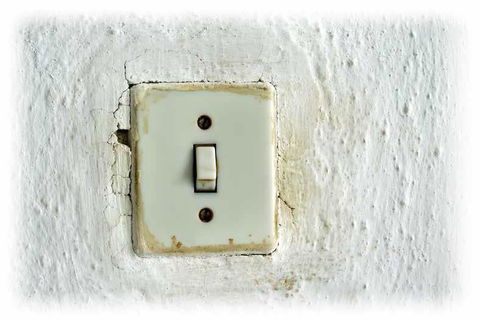When it comes to controls in retail, there are haves and there are have-nots – a fact that perturbs Sam Woodward

One of the most marked divides, in lighting control terms, is in the world of retail lighting. The chasm between those
who enjoy the many benefits of good controls and those who do not use controls at all is vast, and widening.
Yet the energy savings that come from optimising lighting use can make a dramatic difference to a retailer’s bottom line. Money saved on electricity has an effect on profitability equivalent to an increase in sales, so it’s remarkable that so few companies embrace lighting controls with gusto. Not only can controls directly increase profits, but they can also enhance the customer experience, which ultimately leads to more brand loyalty, more return visits and increased profits.
It’s great to see more efficient light sources, such as LEDs, being adopted; but this is really only one piece of the conservation pie, and there are more gains to be had. The key is to optimise a combination of efficient sources, efficient drivers, and efficient controls.
Retailers that look at only part of this technology trio are missing out.
Leading edge and bottom line
The good news is that, at the leading edge, remarkable things are being done by companies and brands that are discovering controls can enhance their bottom line, and their CSR image.
Setting aside smartphone interaction technologies in the fittings that provide location data, leading retailers are already seeing benefits by using lighting controls to monitor energy consumption, to take steps to reduce load and to schedule maintenance, as well as providing a more dynamic lighting environment for customers.
For example, Apple uses Lutron’s commercial Quantum system to view rich data from its stores remotely, giving the company ammunition for devising energy-saving strategies, along with information on the status of fittings. The system also provides multi-zone time-clock control, which takes into account daylight-saving time changes around the world. This enables different scenes to be recalled, store-wide, at different times of day, different days of the week, or for special ‘holiday’ events, creating a richer customer experience in an environment where ambience and atmosphere are important to the brand.
Car showrooms
Another example of great use of time-based automated control is car showrooms where, at night, when the glass-fronted buildings are closed, ‘hero’ products can be highlighted in pools of light without illuminating the whole sales space.
Not only is this treatment more eye-catching, but it is tremendous for reducing energy use for lighting. The use of a fourth dimension, time, brings a renewed attraction for the retailers’ design and invites customers into the space.
It’s accepted, both by regulation and also by design, that display lighting must be bright. Well, not quite. Display lighting must be high contrast, and therefore in so many shops the lighting is as bright as possible (with the exception of certain fashion stores that I have insufficient street cred to patronise) to make the products stand out in their surroundings.
Yet display lighting is only part of the story in shops. Quick wins for energy saving are available in back-of-house areas, including stockrooms, corridors, offices, loading bays and staff facilities. Occupancy sensors give fast savings for low-footfall parts of the building, and need not be disruptive or expensive to install if they are wireless. Sensors, with batteries that should last a decade, can be wirelessly linked to switching or even dimming ballasts on fittings without the need to pull control cabling into the space.
It is remarkable that, in 2015, there are still vast numbers of retail premises where there is no dynamic control of lighting. The most important function of retail is to increase sales, and failing to control lighting means these retailers are missing out on three opportunities: dynamic ‘theatricality’ to attract customers; enhanced ability to focus attention on the products by dimming other lighting; and overall energy-saving, front and back-of-house, to increase profits.
With a broad range of controls available, there’s something for every store, and no reason not to get started in enjoying the benefits which they bring.
Register for your free copy of Lux Review magzine at www.luxreview.com